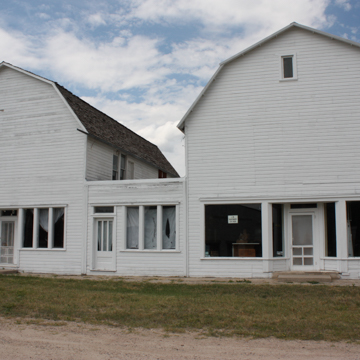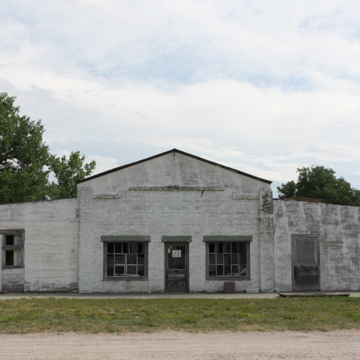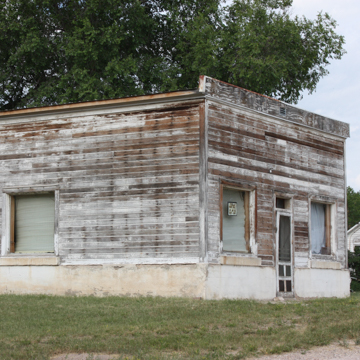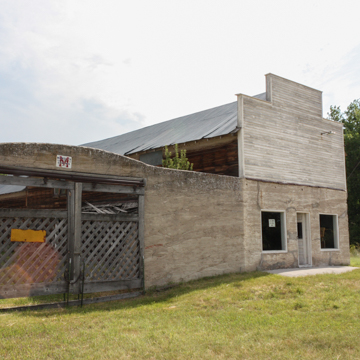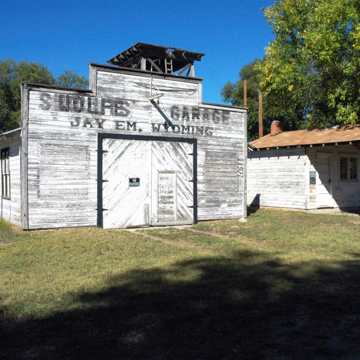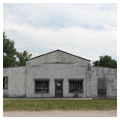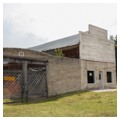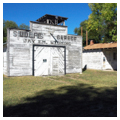The Town of Jay Em is located near Rawhide Creek in southeastern Wyoming, approximately thirty miles north of Fort Laramie. The core of the town flanks the north and south sides of Main Street, from Third Avenue on the west to Second Avenue on the east. The town’s eight commercial buildings stand seemingly frozen in time, with interiors still full of the goods and equipment that served the homesteaders who frequented them at the turn of the twentieth century. The exteriors look ready for business and the concrete sidewalks are swept and shoveled, yet the doors are locked. The town provided these services into the 1960s, when it succumbed to competition from larger commercial centers. Jay Em is unique for having survived as an independent homesteader haven, not reliant the railroad, mining, or any other industry.
The town was originally constructed by Lake Harris, its founder, between 1915 and 1935, to support the surrounding ranching community and provide relief from isolation. Harris named the town after James Moore, who owned the second largest cattle ranch in Wyoming Territory in 1869; his cattle, branded “J Rolling M,” roamed the area by Rawhide Creek and nearby Jay Em Creek (also named after Moore). Moore had died in 1875, but his brand and creek names remained. Harris’s father Silas had taken control of the Jay Em Ranch in 1905 and the family established a post office and small general store on the ranch, providing supplies for other ranchers and homesteaders. When Lake Harris filed his own homestead claim on Rawhide Creek in 1912, he laid plans to build a town and formalize the existing community services. The Harris family’s ambitions for the Town of Jay Em are evident in the 1919 town plat (signed by Jay Em Cattle Company president Silas Harris), which included a half-mile race track, eight blocks for development, and a cemetery. Final build-out was limited to two commercial blocks.
The commercial core of the town included structures necessary to provide the essentials. All are simple vernacular buildings constructed with local materials (wood and concrete). The largest, most prominent buildings in Jay Em are the lumber yard, the hardware/grocery store, the bank/post office, and the stone shop. Other structures include a garage/gas station and a water tower.
The town, today a National Register Historic District, continues to embody the settlement patterns of pioneers and homesteaders on the high plains. The historic district comprises Lake Harris’s residence, plus eight commercial buildings that were the social and retail core of the town. These buildings have been modified little over time. Harris, the founder and “guiding spirit” of the town, died in 1983 at age 96. His descendants have formed a corporation, hoping to operate the town as an educational center. Although the businesses are currently closed, Jay Em had a documented population of 78 in the 2000 census.
References
CTA Architects Engineers. Architectural & Structural Assessment of the Town of Jay Em. November 10, 2010.
Gorman, Michael, and WRC Staff, “Jay Em Historic District,” Goshen County, Wyoming. National Register of Historic Places Registration Form, 1984. National Park Service, U.S. Department of the Interior, Washington, DC.

